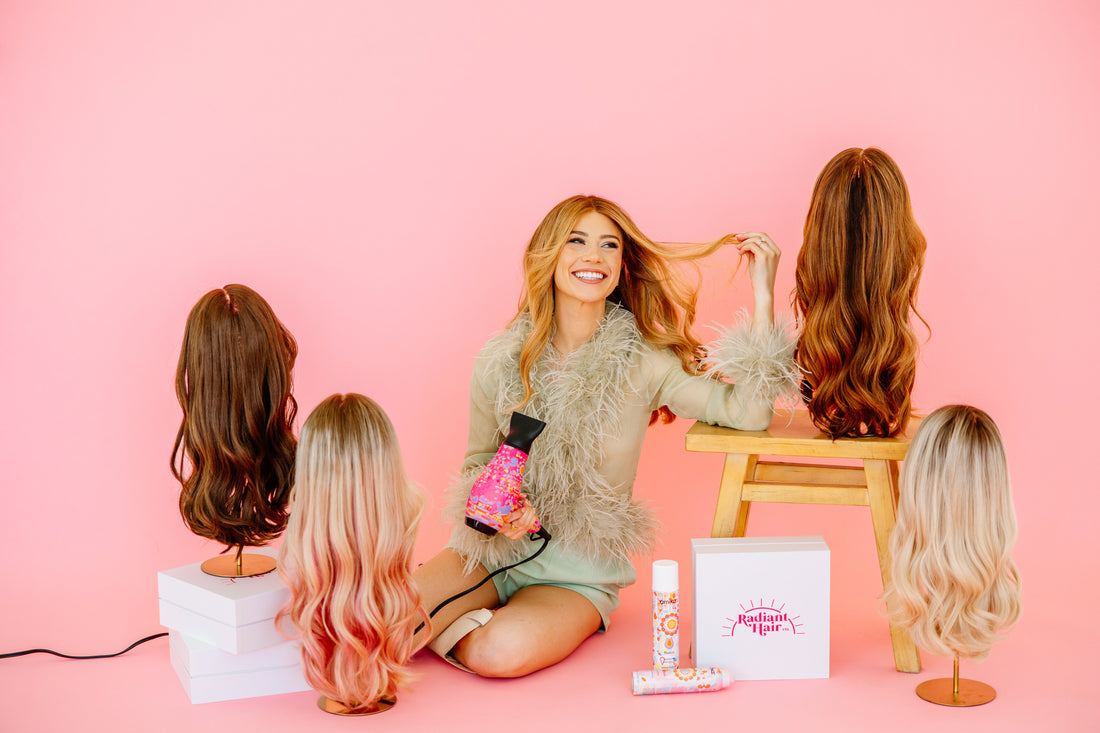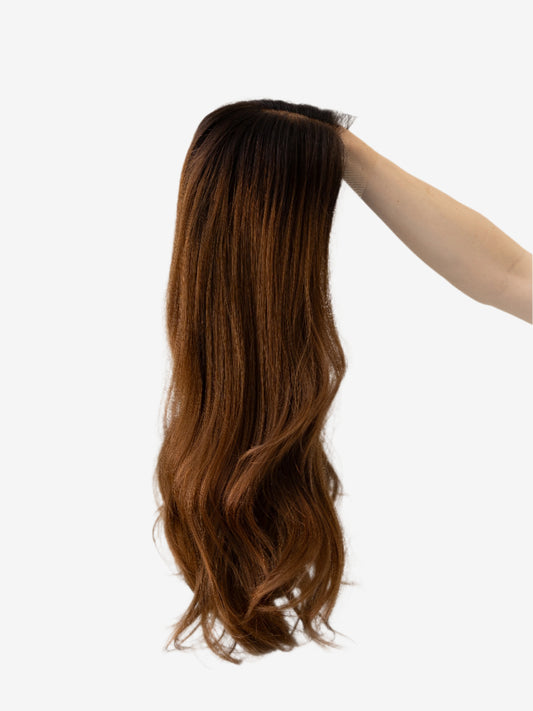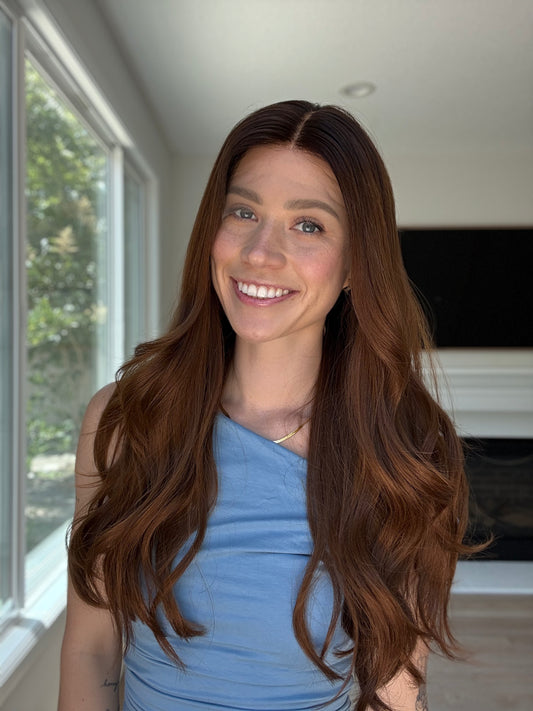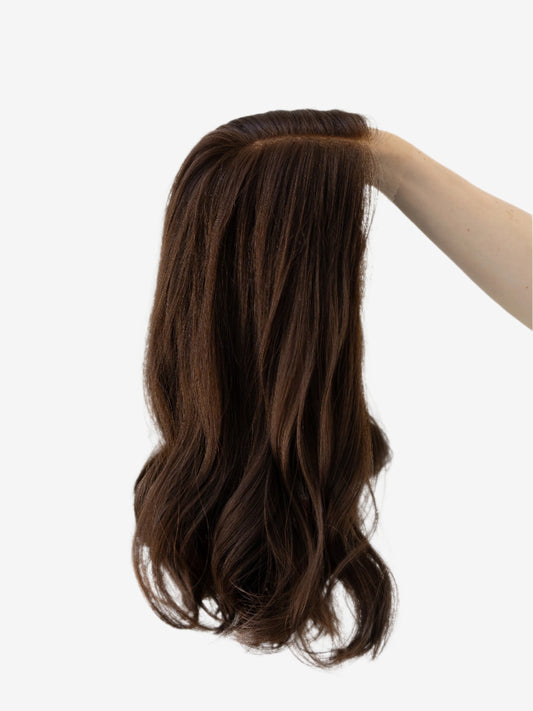When shopping for a wig, especially online, you’re bound to come across terms like 130% density, 180% density, or light density wig. These percentages refer to wig hair density—the thickness and volume of the hair on the unit. And while it might seem like a simple numbers game, the truth is: wig density is not one-size-fits-all.
At Radiant Hair Co., we specialize in glueless human hair wigs designed to look and feel like your natural hair. Understanding how wig density affects comfort, realism, and ease of wear is essential—especially for women experiencing hair loss, recovering from medical treatments, or new to wigs altogether.
What Is Wig Hair Density?
Wig density refers to how much hair is used on the wig cap. The higher the percentage, the fuller and thicker the wig will look. For example, a 130% density wig is considered “natural,” while a 180% wig offers a much fuller, glam look.
But here’s the most important truth:
Hair density is only one part of the story.
A 130% lace wig and a 130% silk top wig can feel completely different. That’s because cap construction, materials used, and how the hair is tied all impact how density is experienced. In a lace wig, hair is ventilated (hand-tied) into a mesh base. In silk top wigs, multiple fabric layers create a fuller visual effect and slightly heavier feel—even at the same density level.
Common Wig Density Percentages
Here’s a breakdown of the most common wig densities:
-
100% – 120% (Low/Light Density): Thin, natural appearance; ideal for medical hair loss, daily wear, or minimal styling.
-
130% (Natural/Standard Density): Mimics average hair thickness. Offers volume without being too full.
-
150% (Full Density): A bit thicker than natural hair. Great for fuller styles or body wave textures.
-
180% – 200%+ (Heavy Density): High-volume wigs used for bold looks, glam styling, or dramatic curls.
Important Note: These numbers do not translate equally across all brands or wig types. A 130% silk top will appear denser than a 130% lace front wig due to the thickness of the cap and hair layering.
Why Low-Density Wigs Offer the Most Natural Look
At Radiant Hair Co., we believe less is often more—especially when it comes to realism, comfort, and ease of styling. That’s why many of our most popular units feature low-density hairlines and lightweight density throughout.
Here’s why light-density wigs are often the best choice:
-
More natural movement: The hair lays flatter and flows more like your natural hair.
-
Less weight on the scalp: Especially important for women experiencing hair loss or recovering from medical treatments.
-
Easier to style and wash: Less hair means quicker drying time, less tangling, and a more manageable everyday routine.
-
Better fit under hats and scarves: For women going through chemotherapy or alopecia, this comfort can make a huge difference.
Rather than fixating on percentages, look for keywords like “low density,” “lightweight,” or “natural-looking”—especially when buying wigs for medical reasons.
What Wig Density Is Best for Hair Loss or Thinning Hair?
If you're shopping for a wig due to hair loss, thinning, or alopecia, your scalp is likely more sensitive—and comfort is a top priority. In these cases, we strongly recommend low-density wigs, ideally glueless and made from breathable materials.
Wearing a thick, heavy wig with glue or clips can cause irritation or worsen breakage on delicate areas like the crown or edges. That’s why our glueless lace wigs are designed to feel weightless, with natural hairlines and realistic parting that don’t require adhesives or bulky density.
Our customers who wear wigs every day—whether for health reasons or confidence—consistently tell us how much they value the lightweight feel and effortless realism of lower-density pieces.
When to Choose Higher Density Wigs
Of course, there’s nothing wrong with loving volume. If you want a fuller, more glamorous look—like big curls, long layers, or high-volume blowouts—a 150% or 180% density wig might be perfect for you.
Where you will find high density wigs:
-
Synthetic wigs to medium to high density
-
Budget friendly wigs
-
Wigs with layered body wave or loose curls
Just keep in mind: higher density = heavier feel and more upkeep. These wigs take longer to wash, detangle, and style—and may not be ideal for sensitive scalps or daily wear.
How to Choose the Right Wig Density for You
When selecting wig density, ask yourself:
-
Do I want volume or realism?
-
Will I wear this every day or occasionally?
-
Is my scalp sensitive or recovering from hair loss?
-
What styles do I like—sleek and simple or bold and bouncy?
Need help deciding? Book a virtual consultation with our team—we’ll help you find your perfect fit based on your lifestyle, goals, and natural hair background.
Final Thoughts: Density Is Personal—Not Just a Number
Wig density is one of the most misunderstood parts of wig shopping—but it doesn’t have to be. What matters most is how the wig feels on your head, blends with your natural features, and supports your confidence.
At Radiant Hair Co., we focus on creating low-density, glueless human hair wigs that put comfort first—without sacrificing beauty. Whether you want subtle fullness or soft movement, we’re here to help you feel seen, confident, and effortlessly radiant.
Shop our lightweight glueless wigs and experience the freedom of a wig that feels like you.









